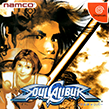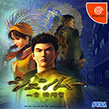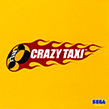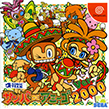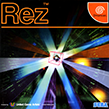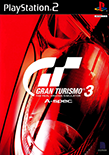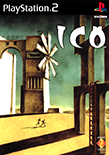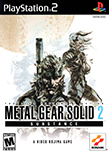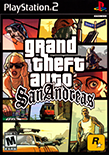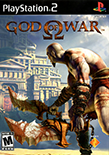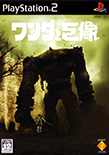The Japanese launch of Sega’s Dreamcast in the final weeks of fall 1998 marked the beginning of the sixth generation of game consoles, a cycle that lasted for almost a decade.
It was the very last time that four major console manufacturers would fight head-to-head to dominate a flourishing billion-dollar industry, a free for all war that would eventually cause the untimely demise of Sega as a hardware company and confirm Sony as the mastodon front-runner of a new video game universe.
Despite the ruthless competition and the crowded market, all four companies delivered some truly groundbreaking hardware features, which essentially allowed game developers to display a much broader vision, unhindered by any of the technological limitations of past generations.
It’s Thinking…
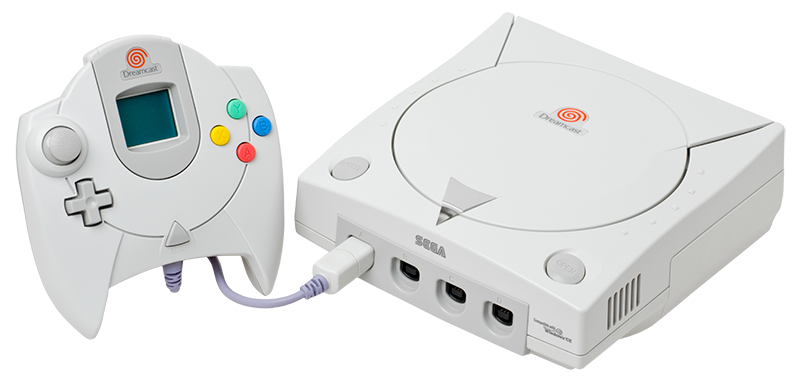
Code-named Dural then Katana, Sega’s new console was a technical leap forward from the previous generation, online-ready out of the box and using a ground-breaking controller design with a removable interactive storage unit, the VMU, to save game progress and play mini-games.
Dreamcast games were particularly innovative, remarkably arcade perfect, with unbelievably crisp graphics and framerates as smooth as a baby’s bottom.
Sega Hitmaker’s Crazy Taxi was a fun and addictive open-world racing game. Soulcalibur, Namco’s splendid weapon-based fighting game even improved on the original System 12 arcade version. Rez, the cult classic techno rail-shooter that United Game Artists and Tetsuya Mizuguchi named after me (not really) was one of the first successful attempts at gaming synaesthesia.
Smilebit’s awesome open-ended rollerblading and graffiti-tagging game Jet Set Radio took you grinding all over a wacky cell-shaded Tokyo, with its catchy J-pop electronica soundtrack. Sonic Team’s Samba de Amigo was an ingenious rhythm game, played with funky maracas controllers. Finally, Yu Suzuki’s revolutionary action/adventure sandbox epic Shenmue, the very first open-world game, managed to raise many visual and gameplay standards.
(Welcome to the) Third Place
I remember the day my PlayStation 2 arrived from Japan. It was one of the first SCPH-10000 models that a friend in Tokyo had preordered for me and overnighted to London, where I lived back in 2000. It was quite a big deal. No other game console had ever built up the volume of hype that the PS2 boasted before its launch. In fact, as soon as the original PlayStation was released, SCE began working on its ambitious successor while at the same time teasing the media and exciting developers, five years before the console’s actual street date!
With its space-age aesthetics, the PS2 embodied Sony’s vision of a new cyberpunk century: it was black, monolithic, elegant. Its cutting edge architecture was based around a custom CPU with an enigmatic name: The Emotion Engine. It played original PlayStation games. It played music CDs. It played DVD movies.

Sony ultimately followed the success of the PlayStation and stunned the entire gaming industry with an unprecedented one-two punch. The PS2 sold over 155M units to become the best-selling video game console of all time.
With over two thousand published games, the massive PlayStation 2 portfolio was particularly diverse. I played through so many of these titles, yet only a handful actually influenced me. The following games were significant milestones in my game design education.
Kazunori Yamauchi’s highly anticipated Gran Turismo 3: A-Spec was undeniably Polyphony Digital’s killer app for the PlayStation 2. The ultimate racing game, GT3 was a photorealistic visual tour de force. There was a relatively low number of tracks to compete on, or sports cars to collect, but the level of detail and the sheer amount of gameplay got me racing for months only to complete about 85% of the game!
Castle in the Mist

Fumito Ueda’s Ico and Shadow of the Colossus are masterpieces. It took Team ICO four years to develop Ico, a hypnotic, minimalistic and immersive action-adventure classic and easily one of my all-time favorite games. I am to this day impressed by its surreal art style and stunning art direction, the vast, detailed and haunting environments, the flawless keyframe animation and Michiru Ōshima’s brilliant soundtrack. But to me Ueda’s most astonishing achievement has to be the incredible range of emotions that he managed to draw out of the player, including fear, sadness, solitude, love and hope.
Ico’s spiritual sequel, the cinematic Shadow of the Colossus was a comparable tour de force and a true work of art that upped the ante in every possible way.
There’s room for only one Snake, and One big Boss!
Metal Gear Solid 2: Sons of Liberty was the most anticipated exclusive game in the PlayStation 2’s history and a key title in the console’s success. With an unprecedented level of visual realism and a Hollywood blockbuster presentation, the game’s early demo presented at E3 in 2000 pushed the PS2 to its limits. Hideo Kojima’s influential postmodern sequel to his PlayStation magnum opus really pushed it up to eleven, with significant enhancements in the stealth gameplay, faultless controls and an advanced physics engine, only hindered by a convoluted narrative and absurdly high cutscene-to-gameplay ratio.
On November of 2004, Konami released the follow-up to Sons of Liberty for the PlayStation 2. Set in 1964 during the Cold War, Metal Gear Solid 3: Snake Eater was I think an even better paced, more focused and overall more genuine Metal Gear experience, with a satisfying storyline and somewhat improved stealth mechanics. Kojima’s demented creative genius made me play through both MGS2 and MGS3 quite a few times, in search of insanely specific details and bizarre Easter eggs that only he can conceive.
Hot Coffee

In 2001, Sam and Dan Houser redefined the crime simulation game genre with the release of the critically acclaimed PlayStation 2 exclusive Grand Theft Auto III. Never before had a franchise so ferociously and irrefutably impacted the gaming industry and perhaps the modern western culture, the way the Grand Theft Auto series did.
Grand Theft Auto III took the basic concepts of the original GTA games into the 3D world of the PS2, with a free roaming crime-ridden replica of New York City.
Rockstar Games quickly followed up with two commercially successful sequels. The Brian De Palma-inspired Vice City was set in a fictional 1980s Miami and the outstanding San Andreas recreated parts of Los Angeles, San Francisco and Las Vegas. With over 17 million copies sold, San Andreas eventually became the best-selling PlayStation 2 game of all time.
The mature thematic, sexual content and violence of the Grand Theft Auto games caused frequent controversies, that without a doubt also contributed to the series increasing popularity and commercial success.
The monster you created has returned…
In 2005, a new game from Sony’s Santa Monica Studio significantly strengthened the PlayStation 2’s domination. Dave Jaffe’s super-polished Greek mythology action epic God of War was ultraviolent, over-the-top, cinematic and awfully satisfying to play with gorgeous visuals and a refined gameplay. Jaffe raised the bar with God of War II, an even bigger, bolder and gorier experience that pushed its predecessor’s boundaries to arguably redefine the action game genre.
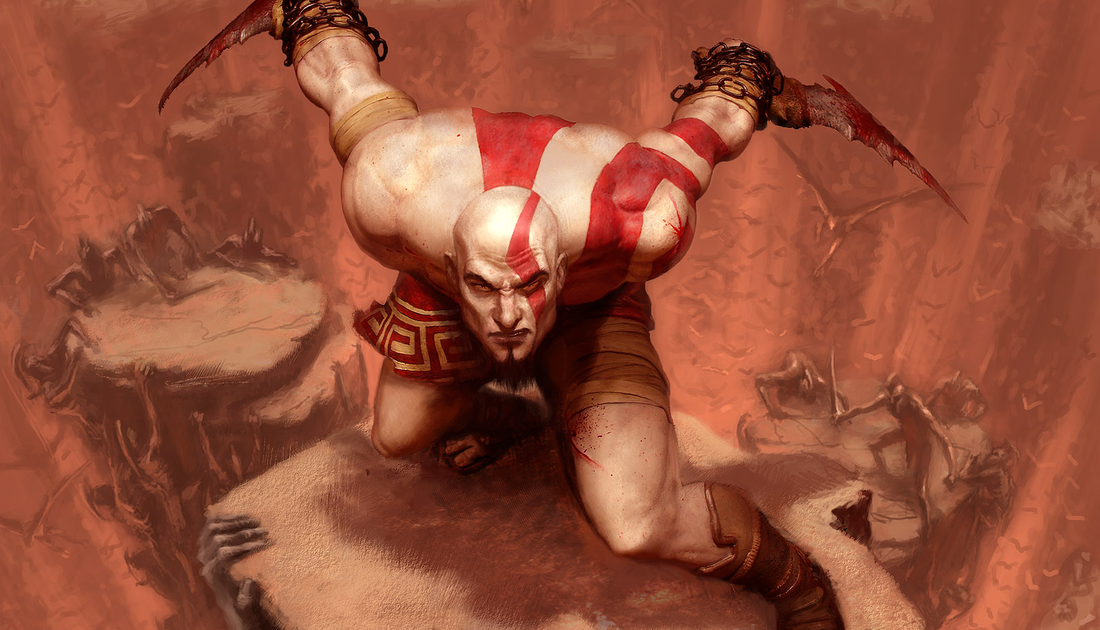
On the next episode of a Lifetime of Pixels, I will be sharing my experience with two other key players in the amazing sixth console cycle: a video game pioneer based in Kyoto and a new kid on the block from Redmond…

